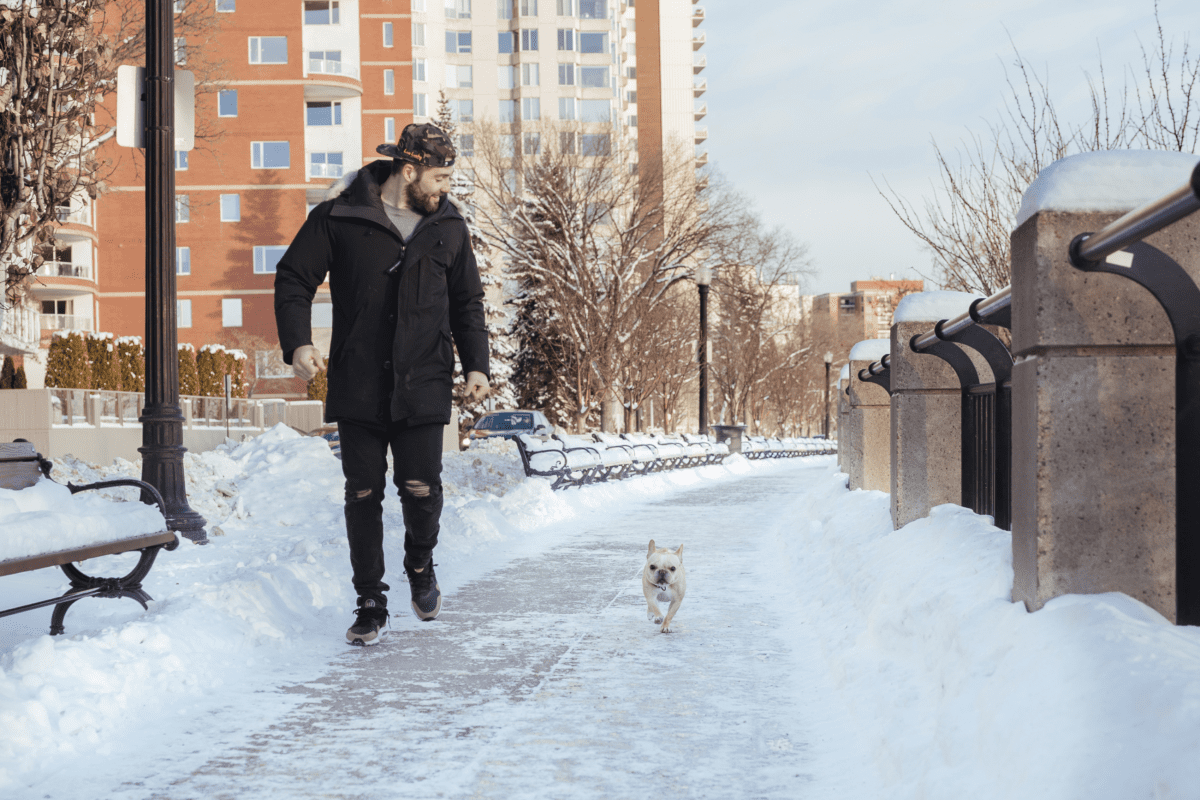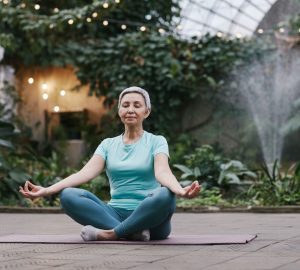Dogs make the best workout buddies. They never complain about hills, or cancel on you last-minute. And they’re always pumped to follow you out the door and get some fresh air. That energy can be contagious. Research has found that canine owners were 34% more likely to get the recommended 150 minutes of exercise a week than those who didn’t have a dog. Even if you’re just taking your pup for a walk, that counts. (Move at a brisk clip and you can burn as many as 170 calories in half an hour.) But there are lots of other ways to get active with your dog—all while strengthening your bond.
Check out these fun ways to get fit with your furry pal.
Running
Because dogs are creatures of habit, they can help you keep up your weekly mileage: Once your pup gets into the routine of a morning run, they won’t let you wimp out if it’s drizzling, or you’re just feeling tired. They will wait by your sneakers, tongue out, tail wagging ready for you to get them out the door. Their excitement can be enough to change your attitude.
Concerned your little pooch won’t keep up? No need to worry, as most small dogs have more energy than the big breeds. Just be careful in the heat and humidity, since dogs don’t sweat like we do. And if you have a flat-faced breed (think pugs and Boston terriers), keep your runs under five miles since these dogs have a harder time taking in air.
Stand-up paddle boarding
It’s almost as if stand-up paddleboards were designed for canine co-pilots: Dogs of all sizes can ride on the nose (while you get a killer ab workout). Pick an ultra-calm day on a lake for your first excursion together, so your pup can develop their sea legs. If you’re struggling to balance the board, try paddling on your knees, which lowers your center of gravity, until your dog is comfortable. Still, odds are you’ll both take a dip, which is why we recommend outfitting your dog with a life preserver to get active with your dog. It’ll make it easier for you to lift them back onto the board too.
Is your dog a born swimmer? Bring a stick or throw toy and play fetch once you’ve paddled out.
Kayaking
You can also take your dog out for a spin in a sit-on-top kayak. Smaller breeds may perch up front, while larger dogs might feel safer closer to your feet. Teach your buddy to get in and out of the kayak on land first; then practice in the shallow water close to shore. If they seem nervous about sliding around, you could lay down a small mat or piece of carpet so their paws can get some traction. The trick is to keep the first few outings relaxed and fun (read: brings treats!). Stick to small lakes and slow-moving rivers without too much boat traffic. You can let your dog paddle alongside you if he wants to swim. If not, that’s okay too. They will be getting lots of stimulation just by riding in the boat all while you tone your arms and core and burn some calories.
Cycling
Is your dog so exuberant on walks you worry she might one day pull your arm off? If so, try letting her keep up with you as you pedal. Biking is perfect for dogs with tons of energy and help you get active with your dog. They are totally psyched to flat-out run. Meanwhile, you’re getting a great workout and building your leg muscles.
If your pup likes chasing squirrels and skateboards, consider using a device that attaches the leash to your bike’s frame or seat stem and absorbs much of the force of sudden tugs. Check with your local bike shop for their suggestions.
Biking with your dog may actually help with any behavioral issues they have. The biggest problem with dogs is that they’re often not getting enough exercise. Aerobic exercise stimulates the brain to make serotonin, a hormone that helps dogs, especially those who are anxious or aggressive, to relax.
Rollerblading
You might have to search through your crawl space or garage under your Sony Discman and MC Hammer Pants to find them, but rollerblading is another great way to burn off a dog’s excess energy—as long as you’re an expert incline skater, that is. If not, it can be disastrous. Your dog will be like ‘Woohoo!’ and you’ll be like, ‘Where’s the break?!’ But even if you’re super confident on wheels, we suggest rollerblading in an area free of traffic, like a park or boardwalk, so you can enjoy the excursion as much as your pal. Chances are, you’ll have so much fun you’ll forget you’re seriously working your core.
Active fetch
You throw the ball and your pup goes bounding after it. But who says you have to just stand there? While he’s retrieving, bust out some muscle-building moves like crunches, lunges, squats, and more—until you’re both panting and worn out. while you get active with your dog Better yet, race them for the ball and squeeze in some sprints. Fetch can be a game you play, too.
Soccer
Believe it or not, some dogs love soccer—especially herding breeds like Border Collies and Australian Shepherds. Pet brands sell soccer-style balls that are resistant to sharp teeth in different sizes. Once they learn to “kick” or “dribble” with their nose or paws, get your heart rates up with keep-away, or by punting the ball and racing for it.
Not a soccer fan? Try engaging him with other toys (like rope tugs) and activities (such as hide-and-seek).
Stair-running
Thanks to the vertical element, climbing stairs (or bleachers) makes your quads, hamstrings, and glutes work extra hard. You’ll tighten up your lower half, while they burn off the biscuits.
Join a canine charity race
You have the perfect training buddy. Why not work toward the goal of finishing a dog-friendly race? Events for four-pawed runners and their owners—such as the Pets in The Park and a number of other runs and races allow your dog to tag along. Check before registering to make sure they are allowed and then enjoy some quality time outdoor with your best friend.
Don’t have a dog?
You can still work out with one. Call a local animal shelter and volunteer to take dogs out for walks or runs. Most shelters are often desperate for volunteers to help exercise their guests, and your commitment to your new furry pal is great motivation to stick with a fitness routine. Best of all, as an anxious or unruly dog learns to walk on a leash and behave in public, you’ll be improving his chances of finding a forever home.
Thanks to Bernadette (@insta_bernie) and her dad Patrick Maroon (@patmaroon) for letting us tag along to capture some great photos.








